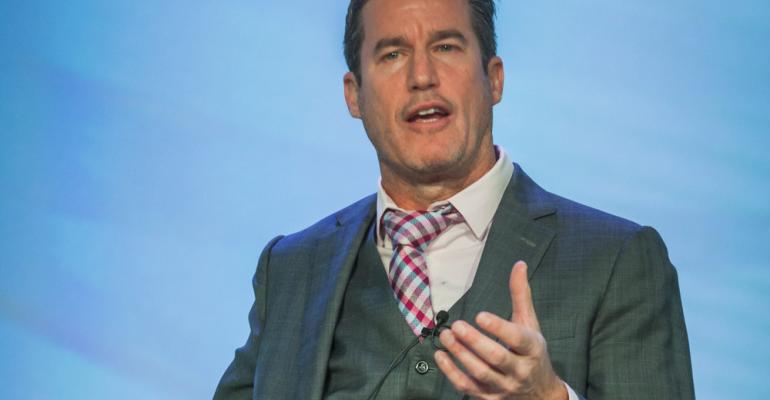While recent events have many meeting professionals focused on preparing for things such as active shooters and weather catastrophes, it’s far more probable that someone at your event will have a medical issue.
Just ask Jonathan Spero, M.D. From a heart attack that took out a CEO at a worldwide convention, to an outbreak of norovirus that left two-thirds of attendees miserably quarantined in their guest rooms, to an incentive attendee who took a wrong turn during an all-terrain vehicle ride and ended up with serious trauma, Spero has seen it all.
Spero founded InHouse Physicians in 1992, and currently serves as CEO of the company, which, among other services, provides 24-hour, on-site, board-certified or equivalent medical personnel for meetings and incentives. While most meetings don’t require on-site physicians, nurses, or other medical staff, there are questions all meeting professionals should ask to ensure the safety of their participants, says Spero.
Here are the steps he recommends to create a proactive medical risk management plan.
1. Identify all health risks that could be associated with your program.
Spero says to include the routine medical emergencies that could happen to anyone at any time, such as a cardiac event or a slip and fall. But also think about the risks specific to your event and your host locale. For example, there will be additional risks for altitude sickness if your meeting destination is at a high altitude, or of potential environmental hazards if people will be engaging in water sports, or for heat stroke if they will be subjected to high heat and humidity levels. If you’re going internationally, there could be infectious-disease risks and potential food- or water-contamination issues. As is sometimes the case with incentive travel, there might be children attending. And “when kids travel, they tend to get sick more often,” Spero says.
It’s also important to ask all attendees if they have any medical issues you should be aware of. “Are they deathly allergic to shellfish? Or will they need a wheelchair? You need to add those questions to your pre-con checklist.”
2. Determine ways to mitigate as many risks as possible.
For example, if you know you’re doing a teambuilding activity outdoors in a hot locale, plan to have cooling stations and plenty of water bottles to help reduce the possibility of heat exhaustion.
3. Communicate potential health risks—and what you plan to do about them—to attendees.
“You don’t want to alarm people, but conduct your due diligence and tell them if there are risks they should be taking into account,” he says. “Talk about heat exhaustion, or altitude sickness. If you’re going internationally, tell them to ask their doctor about the inoculations they may need.”
4. Find out what the average emergency medical response time is to your meeting venue.
Unfortunately, there isn’t a website listing EMS response times for all venues around the world, so your best bet is to ask the director of security at your hotel or convention center. Is there a fire/ambulance station within a few blocks, or is it further away? How long will it take emergency responders to get to your venue? It’s also a good idea, especially for large venues, to know which entrance EMS responders should use to get to your meeting space.
“A sore throat may be OK, but if that same person goes into cardiac arrest and the response time is 30 minutes, that person is likely going to die,” he says.
5. Identify the closest—and the best—hospital and urgent-care facilities.
Be aware that these may not be the same, warns Spero. “Your destination management company might be able to help you with this.” If your event is in a remote locale, also think about how you will transport someone with a medical emergency to the care facility. “If the closest trauma center is a flight away, you need to arrange for that possibility,” says Spero, adding that many companies use iJet or other emergency-logistics companies for these situations.
6. Evaluate the property’s first-responder team.
“They should have at least two personnel who are certified in CPR and first aid, and available 24 hours a day to respond to any medical emergency,” says Spero. Ask what their credentials are, and if there’s an automated external defibrillator, or AED, on the property. “Coordinate with your hotel security, and your own corporate security team if you will have one on site with you. You are not alone.”
7. Consider adding on-site medical support.
Services such as what Spero's company offers might be luxury for most meetings, he notes. However, there are some circumstances where you might want to consider it.
For domestic meetings, his clients typically start thinking about hiring on-site medical support for meetings of 500 or more attendees because the odds of an issue go up with larger attendance numbers. Then again, “sometimes we are asked to bring on-site medical staff to domestic meetings with as few as 20 attendees, such as for a pharmaceutical company's board of directors meeting or another meeting that gathers top talent in one place.”
International meetings where the standard of care and/or emergency response times might not be sufficient for your needs also can be candidates for on-site medical staff, as can meetings in remote domestic locales that could have challenges with quick accessibility to quality care.





